Polyphasic Sleep Cycles

What is Polyphasic Sleep?
Polyphasic is defined as having multiple successive peaks of activity. In this case, for polyphasic sleep, it refers to sleeping multiple times in a 24-hour period with the intent to achieve as much awake time as possible. Some examples of polyphasic sleep are human babies and animals where they may take multiple few hour naps over the course of the day instead of being awake for one part of the day and then asleep for the other part. Elderly people often have disturbed sleep which includes polyphasic sleep.

Who Came up with Polyphasic Sleeping?
He made the term not the sleep schedule
The term "polyphasic sleep" was created by the early 20th century psychologist J.S. Szymanski of which there is not much known.
One of the more famous people who studied and applied this form of sleep is Richard Buckminster Fuller. Fuller decided that man has a primary energy storage that can be quickly refilled and a secondary energy storage that requires more time to restore. Fuller trained himself to take a nap at the first sign of feeling sleepy which happened about every 6 hours and he noticed after a 30 minute nap that he felt much more energized.
He managed to keep this schedule of sleeping 30 minutes every 6 hours for 2 years. The only reason he reverted to a more normalized sleep schedule is because he noticed his business associates had decided to sleep like "normal" men and so his awake time was becoming less productive. (Maybe he should have written articles for Squidoo in his spare time!) Fuller named this sleep schedule the Dymaxion schedule which is a word that represents dynamic and maximum service.
Fuller explained his feeling on the Dymaxion sleep schedule as "The most vigorous and alert condition I have ever enjoyed." And life-insurance doctors who did his checkups found him in a healthy condition.

Is it natural to sleep this way?
Polyphasic sleeping is sometimes the result of other situations
There are actually multiple things that cause polyphasic sleeping to be desired or to take place. One of the most common examples of polyphasic sleep is found in human babies. If you have a baby then I am sure you have noticed they never sleep at the right times! Nor do they sleep for very long. Babies take naps throughout the day that can last for a few hours and that is what makes babies the most noted polyphasic sleepers.
Another good and common example is cats. If you own a cat then you know this to be true. They take "cat naps" throughout the day whenever they feel like it and then are awake and terrorizing you until their next nap. Dogs sleep longer but, they also sleep whenever they feel like it.
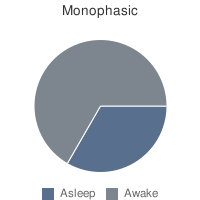
Monophasic Sleep
The accepted norm for sleeping
Monophasic sleep is being awake for a period of time and then being asleep for a period of time. The advised is usually eight hours of sleep a day and sixteen hours of awake time. This is the accepted norm for sleeping but, is not the most widely used sleep schedule. It is believed that the monophasic sleep schedule was only adopted because there was nothing to do at night and so people slept.
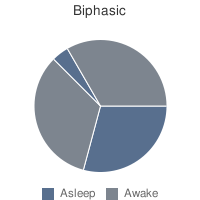
Biphasic
The most widely used sleep schedule
Biphasic sleep is where you have a large period of sleep, a large period of awake time, and then a smaller period of sleep like a nap. This is the most widely used sleep schedule and it is shown through monitors that it is a very normal way to want to sleep. The monitors show that people have a small dip in energy during the middle of the day that a small nap could help with and then a larger dip of energy near the end of the day that a larger amount of sleep helps with.
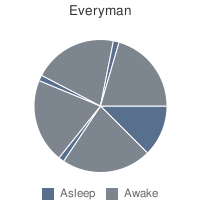
Everyman
The easiest polyphasic sleep schedule
The everyman sleep schedule involves a three hour long sleep and then 3 naps in the day. This is the easiest to adapt to sleep schedule for most people trying polyphasic sleeping for the first time.
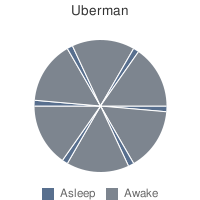
Uberman
You have to adapt to this before trying dymaxion
The uberman schedule has six twenty minute naps during the day. This schedule is easier to adapt to than the dymaxion schedule but, a schedule like this does not work for most people.
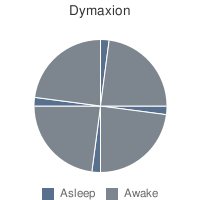
Dymaxion
Fuller's sleep schedule
The Dymaxion schedule has no core sleep and instead has four thirty minute long naps every five and a half hours. This is the sleep schedule that Richard Buckminster Fuller successfully adopted for two years. Very few people can successfully adapt to this schedule because of it's limited period for sleeping. Most people wanting to try this would first have to work up to it from previous levels of polyphasic sleeping.

Pros
The good in a polyphasic sleep schedule
Pros:
-more awake or "productive time." (I think I could get a lot more lenses done in a day!)
-supposedly your body adapts to the short sleep periods and removes the extra steps in sleep so that you go into a deeper sleep quicker
-if you are a business person that works internationally then you will be awake with your international clients
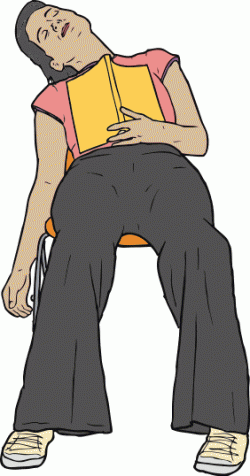
Cons
The downside
Cons:
-people on a polyphasic sleep schedule always experience some level of sleep deprivation
-life interferes (most people work eight hours or more a day with breaks that are not long enough to nap in)
-you must be extremely strict with your sleep schedule (if you take your nap a few minutes late you are going to be off all day)
-a lot of polyphasic sleepers accidentally oversleep on their schedule
-it is hard to have a social life when no one is awake to be social with
-polyphasic sleepers experience mental and cognitive slow downs
-a study of bloggers who use a polyphasic sleep schedule show that they must constantly use engaging activities to stay awake
Should you try this?
Probably not
Being a polyphasic sleeper is a lot of work. For myself, I have no desire to work just to get some sleep. If you are so inclined to try this you have to have a lot of willpower, a flexible or work-at-home job, and having a family is usually not the best idea either.
Who should NOT try this:
-teenagers: When you are a teen you are still growing, sleep deprivation that comes on during a polyphasic schedule will not be helping your body any. You have enough to worry about in life, let trying a new sleep schedule come later.
-pregnant women: You have someone else to consider when you are messing with your sleeping habits. Chances are you are already having enough trouble sleeping as is. Focus on proper nutrition and good amounts of sleep for you and your soon to be.
-children: This is the most important time for a child to be getting their sleep. Their immune systems, bodies, and minds are developing as they get older.
Who COULD try this:
Adults over twenty who are NOT pregnant, preferably live alone, not in a relationship, and have strong willpower. It takes work and strict scheduling to stick to something like this. I do not recommend trying it. Though, if you really really want to, I would suggest trying biphasic sleeping first. Sleep during the night for six hours and nap during the day for two or less. See what works for you. Your body will tell you if it is not happy with what you are doing. Make sure that you are eating properly during this time as well.

My Opinion
I am a biphasic sleeper by the way
I don't feel that a polyphasic sleep schedule is any good at all. I am a biphasic sleeper myself. I sleep for a long period at night and then work and after work I usually sleep for an hour (unless I forget to set my alarm!) Who has the energy to follow a polyphasic sleep schedule? Very few people can follow it for longer than a few months and most experience sleep deprivation the whole duration and never get used to it. I don't like being sleep deprived myself. Polyphasic sleepers also have a very hard time adjusting to a social life and dating is even harder because the person you are dating probably is not adapted to a polyphasic schedule (is there a dating site for polyphasics?) Also, whose work schedule allows for sleep like this? All in all, I do not agree that polyphasic sleeping is an option for a normal person.
This content reflects the personal opinions of the author. It is accurate and true to the best of the author’s knowledge and should not be substituted for impartial fact or advice in legal, political, or personal matters.
© 2010 Mythological








